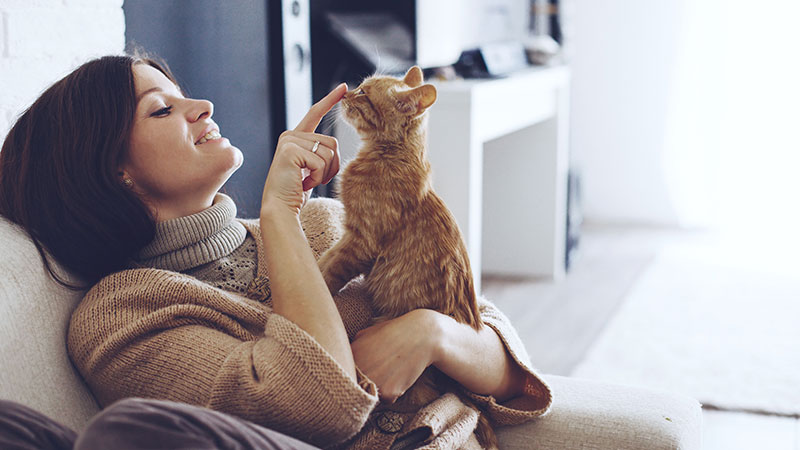Our love and reverence for cats go way back to 7500 BC when history says cats were likely first domesticated in the Near East. The Ancient Egyptians praised them for killing venomous snakes, awarded them the job of protecting the Pharaoh, and honored them so much that they mummified them when buried. So, it is no surprise that today cat owners often put their cats on a pedestal, doing whatever they can to keep their cats happy and healthy.
In honor of National Cat Health Month, let’s take a look at a list of ways to keep your cat CONTENT this month.
C -Check-ups
Make sure you schedule annual check-ups for your cat, as this is the best way for your veterinarian to catch health issues early. By maintaining regular check-ups, your vet will know your cat’s “normal.” It is also easier to stay on top of vaccines and “in the know” about important nutrition and health recommendations for your cat when you are seeing his vet regularly.
O - Oral Care
Tooth decay can lead to tooth loss which can lead to infection. It is important to have your cat’s teeth cleaned regularly. Veterinarians recommend professional teeth cleaning at least once a year. With wellness coverage on your pet insurance plan, you can offset the cost of dental care with reimbursement towards one dental cleaning per year. You can read more about keeping your cat’s mouth minty fresh in our post, Cat Lover’s Month.
N - Neuter/Spay
Spaying or neutering your cat removes the risk of unwanted kittens and prevents illness related to reproductive organs. Pet insurance offers wellness plans to help offset the cost of this procedure.
T - Treat proactively with vaccines
“Core” vaccines should be given at six, nine, and twelve weeks of age (see Petfinder’s Cat and Kitten Vaccination Schedule). For cats, core vaccines include feline herpesvirus type 1 (FHV-1), feline calicivirus (FCV), feline panleukopenia virus (FPV), and rabies. Every pet is different so you must have a conversation with your vet to determine the best vaccine plan for your cat.
E - Exercise
You may not have much success taking your kitty for a leash walk, but that doesn’t mean you shouldn’t make exercise a priority for your cat. According to Dr. Ernie Ward, veterinarian and founder of the Association for Pet Obesity and Prevention (APOP), cats need at least three daily bouts of five-minute play sessions. In our post, Six Pet Trends That Are Worth the Hype, we recommend using a fitness tracker to help you determine if your cat is active while you are away from home. Investing in a tracker that monitors how much exercise your pet gets each day and sends the info to your phone can help make sure your pet maintains his youthful figure.
N - Nourishment
Exercise and diet go hand in hand when it comes to your cat’s health. According to Dr. Ward, “If you’re not having a conversation with your vet about what you’re feeding your pet and how much you’re feeding him, you’re missing an important step to preventative health care.” Measure your cat’s food carefully, and do not eyeball it--check with your vet so you’ll know the exact amount your cat needs to eat to maintain a healthy weight. Watch the number of treats you give your cat and pay attention to the fat and sugar content. You may also consider canned food, a sure way to control portion. The APOP estimates that an average of 10 extra dry bits of food per day can translate to about a pound of weight gain per year for the average cat. For more tips on maintaining your cat’s weight, see our post, National Pet Obesity Day.
T - Toilet habits
Changes in your cat’s bathroom habits can be the first sign something is not right. If your cat stops using the toilet (aka litter box) properly, it could be a sign of stress due to changes in your household. A move, new “roommate” situation, or less quality time spent with your cat could cause your cat to express his dissatisfaction by “missing” the litter box. But loose stools or frequent accidents may be a sign of underlying diseases such as arthritis, cancer, kidney stones, or a UTI. By remaining in tune with your cat’s environmental stimulus and any changes occurring, you can determine whether litter box changes are behavioral or medical.
Use our checklist as a guide and you can be sure your cat will be well on the way to living his most CONTENT life!

